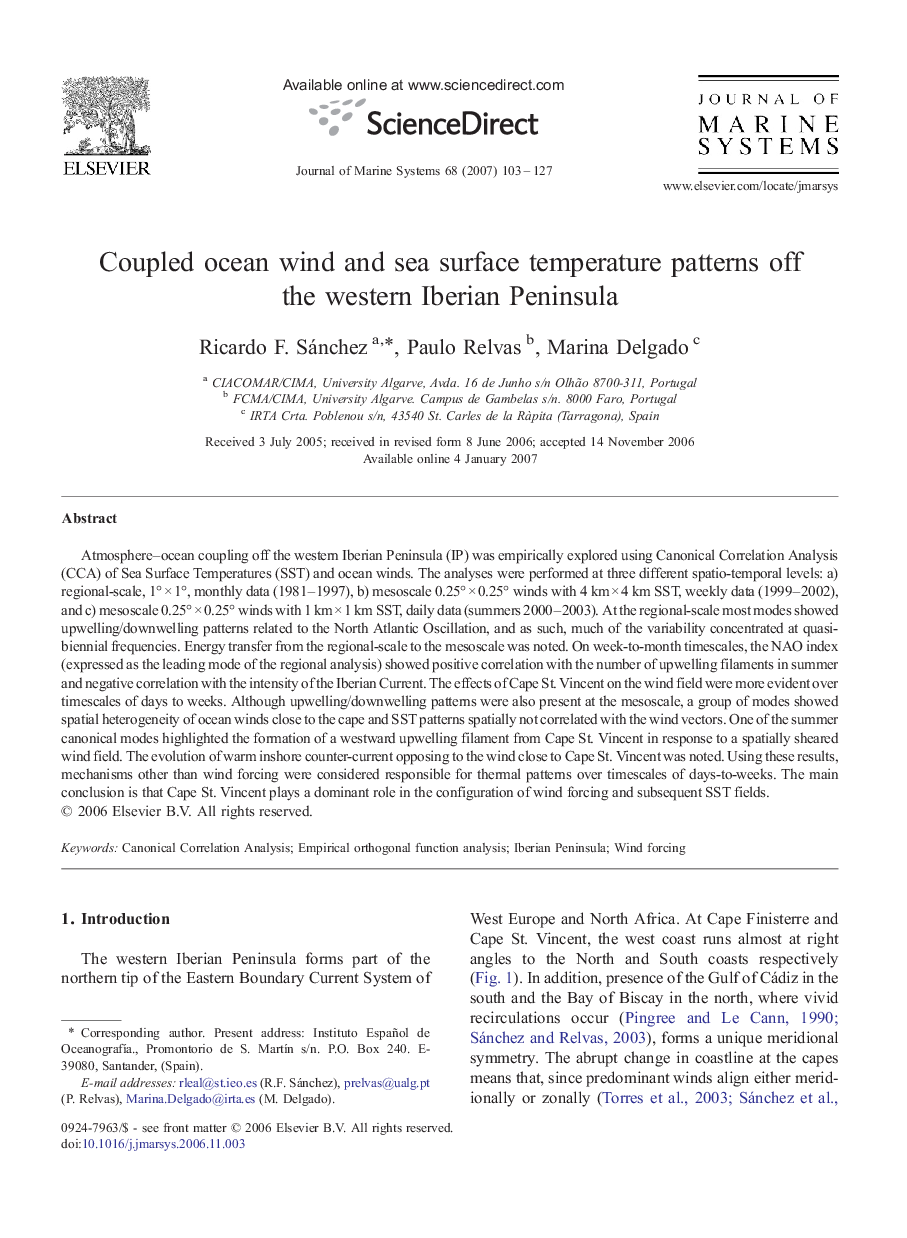| Article ID | Journal | Published Year | Pages | File Type |
|---|---|---|---|---|
| 4549258 | Journal of Marine Systems | 2007 | 25 Pages |
Atmosphere–ocean coupling off the western Iberian Peninsula (IP) was empirically explored using Canonical Correlation Analysis (CCA) of Sea Surface Temperatures (SST) and ocean winds. The analyses were performed at three different spatio-temporal levels: a) regional-scale, 1° × 1°, monthly data (1981–1997), b) mesoscale 0.25° × 0.25° winds with 4 km × 4 km SST, weekly data (1999–2002), and c) mesoscale 0.25° × 0.25° winds with 1 km × 1 km SST, daily data (summers 2000–2003). At the regional-scale most modes showed upwelling/downwelling patterns related to the North Atlantic Oscillation, and as such, much of the variability concentrated at quasi-biennial frequencies. Energy transfer from the regional-scale to the mesoscale was noted. On week-to-month timescales, the NAO index (expressed as the leading mode of the regional analysis) showed positive correlation with the number of upwelling filaments in summer and negative correlation with the intensity of the Iberian Current. The effects of Cape St. Vincent on the wind field were more evident over timescales of days to weeks. Although upwelling/downwelling patterns were also present at the mesoscale, a group of modes showed spatial heterogeneity of ocean winds close to the cape and SST patterns spatially not correlated with the wind vectors. One of the summer canonical modes highlighted the formation of a westward upwelling filament from Cape St. Vincent in response to a spatially sheared wind field. The evolution of warm inshore counter-current opposing to the wind close to Cape St. Vincent was noted. Using these results, mechanisms other than wind forcing were considered responsible for thermal patterns over timescales of days-to-weeks. The main conclusion is that Cape St. Vincent plays a dominant role in the configuration of wind forcing and subsequent SST fields.
